#wootz
Text
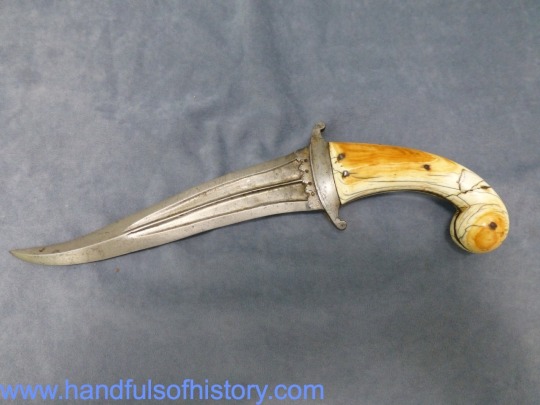
Khanjar Dagger of the Mughal Period with a wootz blade
9 notes
·
View notes
Text

0 notes
Text
We haven't read this book so we can't comment on the quality, but it may be of some use to our followers!
99 notes
·
View notes
Text
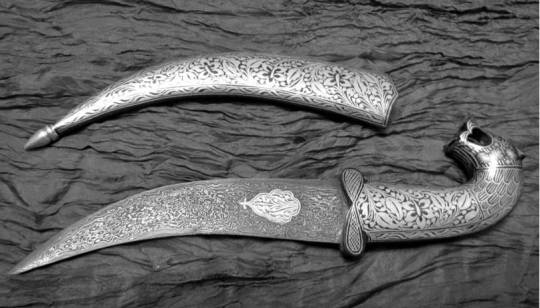
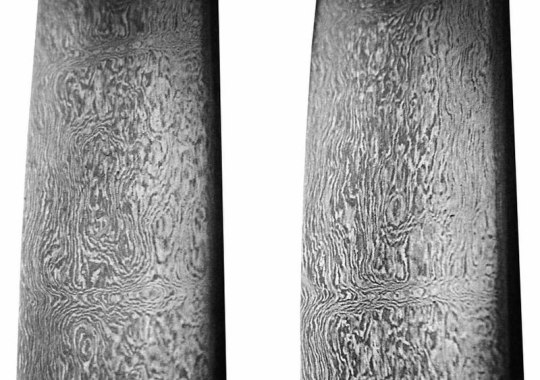

Alloys: Wootz Steel
A high-carbon crucible steel, the history of wootz steel dates back to over 2,000 years ago in the south of India. Though the exact timeline of this alloys invention is unknown, historical records suggest it existed as early as 300-500 BCE. The word wootz is an anglicized version of ukku or urukku, what the steel was known as by the locals in the Dravidian languages.
Wootz steel is characterized by a banded microstructure. Higher carbon varieties contain carbides in a martensitic or pearlitic structure, while lower carbon varieties contain ferrite and pearlite bands (because of its age, there is no set composition for wootz steel). Distinct patterns known as wave, ladder, and rose patterns can be created based on processing. Damascus steel, meanwhile, is merely wootz steel that has been forged into sword blades, and acquired its name from wootz steel that was imported to the city of Damascus before being further processed.
India maintained secrecy around the production of wootz steel for centuries, and thus managed to maintain their status as the primary producer until the 19th century, when Europeans began to produce it as well. The crucible process used to create it involves heating the iron for several days in a clay crucible before slow cooling.
Sources/Further Reading: (Images 1 and 3 - Ancient Origins) (Image 2 - Wikipedia) (ThoughtCo.) (Noblie) (Indian Institute of Science) (Matthew Forde Military Antiques) (Ancient Science) (National Institute of Advanced Studies, Bangalore)
22 notes
·
View notes
Text


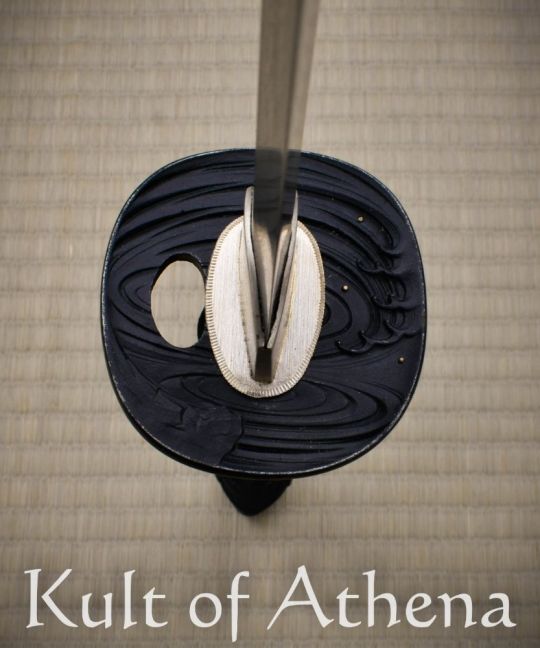
Hanwei Celestial Katana with Wootz Crucible Steel Blade

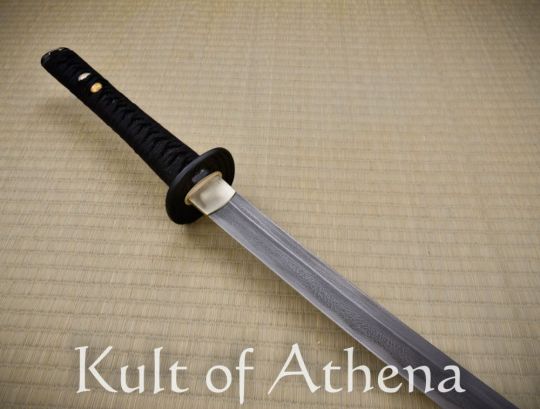

The celestial bodies pull at the water’s edge and create the tide, the ebb and flow of waves that bring time and balance to our world. As the samurai warrior must give and take with the ever-flowing tides of life, the Celestial Katana reflects all the harmonious aspects of the heavens and the sea.
The kashira and tsuba juxtaposes the hamon with a depiction of turbulent sea with waves crashing against the rocks. The tsuka features black cotton sageo over black same with multi-finish planetary menuki. The saya sparkles with a beautiful silver flake with a gloss polish with a buffalo horn kojiri, kurikata and koiguchi adorned with a navy and white sageo.
This special Celestial Katana is made in the crucible Wootz steel and has been differentially hardened. Swords made from genuine Wootz in the crucible steel process are comparatively rare and stand out from most new swords available. Wootz steel is widely regarded as being the “real” and more historical damascus steel and is different from most of the standard steels listed as damascus. What is called damascus is actually a form of pattern-welded steel and the general purpose of mixing and melding different steels together in modern damascus is to imitate the patterning of Wootz.
What makes Wootz steel different from the outset is that its patterning is not made by the smith while forging a blade billet, but is instead created when an ingot of Wootz is created in a crucible as the raw iron is heated with carbon and other ingredients to produce steel that is not only a high carbon steel, but a high carbon steel infused with crystalline bands of hard martensite and pearlite steel to create a composite steel that in effect functions as an early “alloy” steel with a distinctive appearance – an appearance that was later mimicked in later centuries by the modern damascus method, though this method does not create a blade with the famed properties of wootz. Wootz steel was highly prized for its resilience and ductibility and was a premier steel that was being made as early as the 5th century BC in India. By the later Medieval period the city of Damascus was famed for its swords made from Wootz, with ingots of the precious and premium sword blade Wootz crucible steel being imported from India.
#Kult of Athena#KultOfAthena#Hanwei#New Item Wednesday#Celestial Katana with Wootz Crucible Steel Blade#Celestial Katana#Wootz Crucible Steel#Wootz Steel#katana#katanas#sword#swords#weapon#weapons#blade#blades#Japanese Swords#Japanese Weapons#Asian Swords#Asian Weapons#New Item#New Items
3 notes
·
View notes
Text
youtube
#damascus steel#damuscus steel#what is damascus steel#damascus steel in hindi#damascus steel origin#damascus steel documentary#lost damascus steel#wootz damascus steel#damascus blades#secrets of indian history#indian culture#Damascus Steel था Indian Steel जानिये पुरा सच#untold indian history in hindi#un kahe rashya#क्या है damascus steel और क्या है इसके रहस्य#dainik iq#damascussteel#damascus#damascusknife#damascusknives#damascuscamo#Youtube
0 notes
Text

idk how to feel about this armor....
#i want smth other than what i have now#the wootz set is a little too opulent for eidric's normal taste
0 notes
Text
currently at work and one of my shift leads is going off about kpop and has subjected me to listening to nct’s sticker. is this what i was like
#honestly i’m having a great time listening to her give me the rundown on everything#that’s happened in the last four years lmfaoooo#i have enough knowledge to contribute bc i know so much abt groups that debuted 2017 and before but#wtf is enhypen. wtf is wootz#shut up.txt
0 notes
Video
fuck am I gonna do with four Gradivi
(I do have three lance users but two of them rely on magic shenanigans and something tells me this bad boy won’t just have Invert Physical/Magic on it lol)
#few3h#still really cool tho bc Holst and Leonie are competing for Wootz Steel#so putting Grad on Leonie lets me forge Holst's sword more
0 notes
Text
Man I'd love to learn more about protochemistry on the Indian subcontinent. We all love Alchemy and Daojia, but the Tamils had wootz steel in like the 6th century. There's gotta be some interesting writings there.
502 notes
·
View notes
Photo
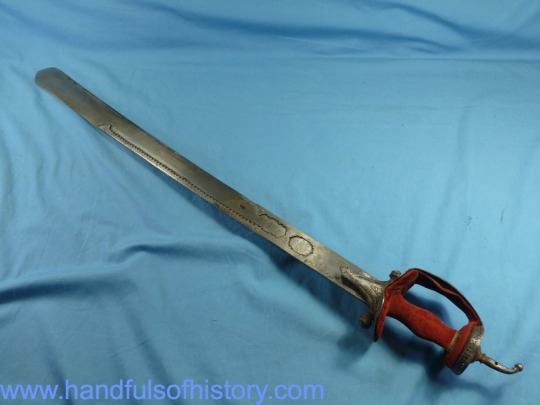
Indian Khanda sword
18 notes
·
View notes
Text

Indo-Persian ceremonial ax with wootz steel blade. 18-19 century.
516 notes
·
View notes
Text



Srivatsa
Leveling a new job on this one and felt the need to make a new look. It's going to get modified at 90 immediately, but this has a classic tank feel to it.
Also I like how the crown has a blue gem that matches the blue on the top :>
Head: Crown of Light - default
Body: Ivalician Holy Knight's Armor - default
Hands: High Mythrite Gauntlets of Fending - metallic silver
Legs: Hemiskin Brais of Fending - shadow blue
Feet: Wootz Sabatons - metallic silver
For female models:
Alt Legs: Yakaku Fundoshi
Earring: Ghost Barque Earrings of Fending
Neck: The Emperor's New Necklace
Wrists: The Emperor's New Bracelet
Right Ring: The Emperor's New Ring
Left Ring: The Emperor's New Ring
Main Hand: Sequence
Off Hand: Srivatsa
Fashion Accessory: --
Minion: --
Mount: --
Location: Ishgard - Saint Reymanaud's Cathedral
Shader: Faeberry Bloom
#ffxiv#ffxiv glamour#ffxiv viera#ffxiv paladin#eorzea collection#valkariel ilmarë#glamour for friends#viera#veena#paladin#tanks#blues/indigos#silvers/greys#no mogstation items#no seasonal items#fantasy glamour#battle glamour
54 notes
·
View notes
Text
I don’t post about this on Tumblr but I have a huge (amateur) interest in materials science, so imagine my delight in learning that South India in the early medieval period was quite a center of advanced metallurgy. In addition to the amazing Chola bronzes (and their casting techniques), extremely high-quality carbon steel weaponry was produced in Southern India (Tamil Nadu first but also Golconda later on) centuries before it became famous as “Damascus” steel. Exports of “Wootz” steel from India, famous for both its strength and the sharpness of the blades made from it, were shaped by Arab sword makers (particularly in Damascus) and because Western Europeans were more likely to encounter Damascus steel than Tamil Nadu steel the name Damascus stuck.
Anyway, the sword that Aditha Karikalan gives to Vandiyadevan is really the most modern and effective weapons technology of its day. The cutting edge, if you can pardon the terrible pun. I would imagine that a sword from the Royal armory is even more top-notch than your common steel sword.
These swords had beautiful patterns in the blade from the carbon deposits that gave the steel its strength and ability to be honed to the extra-sharp setting.

I don’t know whether George R R Martin has mentioned Damascus steel as an inspiration for his magical Valyrian steel but it definitely seems to have inspired it (the patterns in the blade, their sharpness and strength.)
(The above is all my amateur’s understanding so if anyone knows more about this, I am very happy to be corrected :) I was just wondering what the Chola weaponry would have been made of, whether they would use steel, bronze, iron, etc and lo and behold, there’s a whole fascinating world of ancient metallurgy out there.)
163 notes
·
View notes